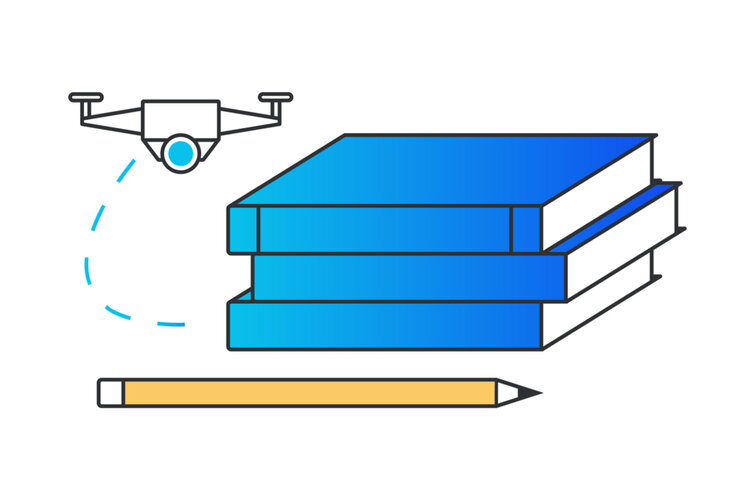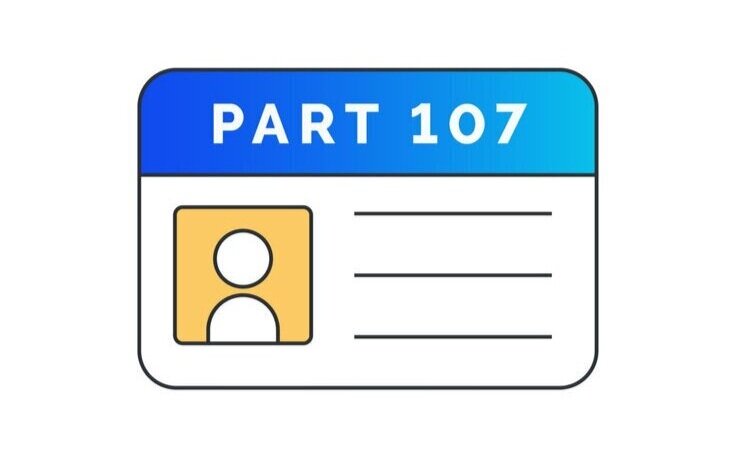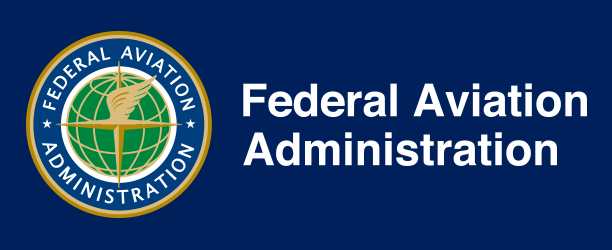After completing a degree in Energy Engineering at Penn State, Santiago Jaramillo landed a job at Tesla as a solar energy storage designer. He wanted to fly drones commercially, so he needed to get his Part 107 license from the Federal Aviation Administration (FAA). Initially daunted by the exam, Santiago went from no knowledge of the Part 107 to passing his exam with a 90% – in one week. Here’s how he did it.
Day 1: Signing up for Drone Pilot Ground School
First, Santiago signed up for Drone Pilot Ground School (DPGS), an online course that covers all the material on the Part 107 exam.
Topics included in the Course:
-
9 self-paced online modules with comprehension quizzes at the end of each.
-
15-20 hours of instruction, including optional extra videos.
-
Real-life examples of how each concept applies to FAA regulations.
-
An in-depth explanation of how the FAA Part 107 exam works.
The sticker price for the course is $299. However, he received a 25% discount from Scanifly, therefore costing him only $225.
Days 3-6: Studying for the FAA Part 107 Test

The DPGS website says the average student completes the course over 2-3 weeks, but Santiago wanted to finish the course more quickly: in one week. To make that happen, he dedicated a couple hours per day to watching modules and taking the quizzes. To further motivate him to get the course done, he scheduled his Part 107 test for exactly one week after he started the course, pre-paying the exam registration fee of $160. Despite going through quickly, Santiago didn’t feel he was missing anything crucial.
“The course was easy to get through because the instructor was really engaging,” said Santiago. “And the course covered everything. I didn’t have to look at any other study resources to feel confident I was going to pass.”
Day 7: Test day
You have to take the FAA Part 107 exam in person at a test center – the DPGS website says there are over 800 locations across the United States. For Santiago, his test center also happened to be a pilot school for commercial aviation.
Santiago’s test location doesn’t permit you to bring anything into the test room. You can either leave it in your car or they provide you with a locker. Due to COVID-19 precautions, the test room considers social distancing, and there are see-through barriers between desks to keep people isolated.
The FAA Part 107 exam contains 60 multiple-choice questions that cover over 120 concepts, including FAA laws, the National Airspace System (NAS), emergency procedures, and flying a drone at night. Santiago said the test had no surprises and the DPGS course prepared him well: in some cases, he noticed the questions were almost identical between the exam and the course. An interesting note as well is that the exam covers everything about the laws and regulations, but you don’t actually have to prove that you can fly a drone to get a Part 107 license.
After completing the questions, Santiago returned to the lobby of the test center to get his results. You need at least a 70% to pass – Santiago achieved 90%, which he credits to the DPGS course.
After that, he submitted his results to the FAA, which issued him a temporary license to print within 7-10 business days. The FAA notes that an official license card arrives in the mail a few weeks later.
After the test

In one week, Santiago went from no knowledge of FAA regulations to being Part 107 licensed. The best part for him is that he can now request permission to fly drones in protected airspace, such as government property or near government sites, which is something that only Part 107 license holders can do.
Looking back, Santiago is happy he chose the DPGS course instead of relying on YouTubers who “guarantee” success on the exam since the DPGS course was more comprehensive and engaging to learn from. And while he did it in one week, he thinks you could easily cram further if you’re willing to dedicate a full Saturday and Sunday to studying.






